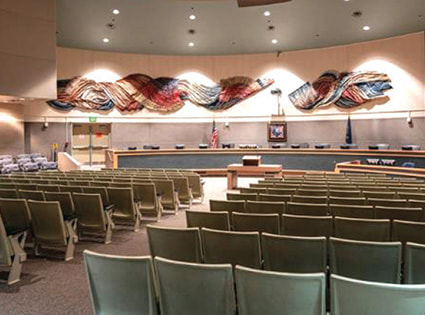December Assembly Update
As is customary for this time of year, the last assembly meeting in the month of November took up the proposed 2022 General Operating Budget. Assembly members spent the evening of November 23rd deliberating, adding amendments to the budget proposal and reversing many of mayor Dave Bronson’s proposed $7.4 million in cuts. Eventually, an amended budget that restored funding in the amount of $1.6 million to the Mobile Crisis Team (a program under the management of the Anchorage Fire Department that sends a mental health clinician with a paramedic to respond to behavioral health calls) as well as to parks, the School Resource Officer program, early childhood education grants, and grants for providers who work for the prevention of child abuse, sexual assault and domestic violence was passed unanimously by the assembly.
The proposed funding source for these public safety programs in the plan presented by the assembly is the municipality’s 2022 alcohol and hotel room tax revenue which, according to budget committee co-chairs Austin Quinn-Davidson and Forrest Dunbar, was vastly underestimated by the Bronson administration in its original budget proposal. The assembly projected an income of at least $500,000 more from the alcohol tax than what was estimated by Bronson’s administration, and $2.5 million more from the hotel room tax in the next year. Mayor Bronson was quick to veto most of the assembly’s budget amendments on November 30, citing the lowering of the city’s bond rating and concerns about the impact of the Omicron COVID-19 variant, both of which his administration claimed could not ensure the financial stability needed to fund those programs. While the budget was the primary topic of November 23rd’s assembly meeting and will remain a pressing issue, the municipality was able to make actual progress in the enactment of the Mass Care Exit Strategy at the assembly meeting on December 7th. For the first time since members of the Bronson administration and Assembly members formed a negotiation team to develop the Mass Care Exit Strategy as a solution to homelessness, the municipality allocated funds to the purchase and construction of new shelters, although the money was essentially earmarked and may be used to purchase different buildings. In a unanimous vote, $6 million in total was allocated in the form of grants to the Alaska Community Foundation to implement the homelessness strategy. As of now, $3.2 million of this money will be put toward the purchase of the Sockeye Hotel and the Barratt Inn, which are set to house 120 people and 150 people respectively. The Sockeye Hotel would become a medical convalescence facility and the Barratt Inn would become a location for “workforce and permanent supportive housing.” These purchases are part of the municipality’s “scattered site” model, in which five different types of housing facilities will be used to work towards a permanent housing solution: a shelter and navigation center for adults, a “special population facility” with a navigation center, a medical convalescence facility, substance misuse treatment with housing, and workforce and permanent supportive housing units. The other $2.8 million in funding approved at the assembly meeting on December 7th will be allocated to the construction of a new shelter intended to serve as a navigation center which will be capable of housing up to 200 people and potentially up to 330 if needed. The municipality is set to submit a request for a design proposal of the navigation center next week, and proposals are due on January 27th. While both the administration and assembly have indicated their intentions to use the site at Tudor and Elmore originally proposed by the Bronson administration for use as a mass shelter back in June, proposals submitted for review may also suggest a separate location for the navigation center. According to South Anchorage assembly member John Weddleton, plans are set to break ground on a navigation center proposal by March or April. In addition to the work accomplished on implementing a solution to homelessness, the assembly also unanimously voted to end the mask mandate. The ordinance, which passed in October and notably provided exceptions for members of the Bronson administration, was to be in place for 60 days or until two of the three hospitals in the city were not operating at crisis levels of care. The mandate would’ve ended automatically on December 14th had the assembly not acted. |
